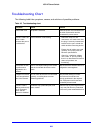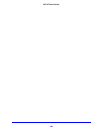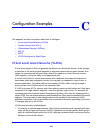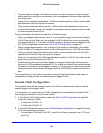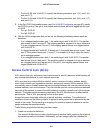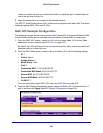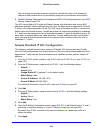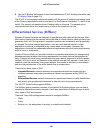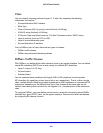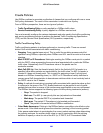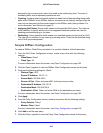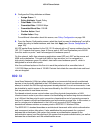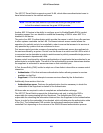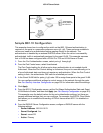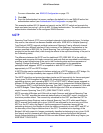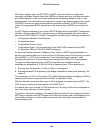
291
XS712T Smart Switch
Class
You can classify incoming packets at layers 2, 3, and 4 by inspecting the following
information for a packet:
• Source/destination MAC address
• EtherType
• Class of Service (802.1p priority) value (first/only VLAN tag)
• VLAN ID range (first/only VLAN tag)
• IP Service Type octet (also known as: ToS bits, Precedence value, DSCP value)
• Layer 4 protocol (such as TCP or UDP)
• Layer 4 source/destination ports
• Source/destination IP address
From a DiffServ point of view, there are two types of classes:
• DiffServ traffic classes
• DiffServ service levels/forwarding classes
DiffServ Traffic Classes
With DiffServ, you define which traffic classes to track on an ingress interface. You can define
simple BA classifiers (DSCP) and a wide variety of multifield (MF) classifiers:
• Layer 2; Layers 3, 4 (IP only)
• Protocol-based
• Address-based
You can combine these classifiers with logical AND or OR operations to build complex
MF-classifiers (by specifying a class type of all or any, respectively). That is, within a single
class, multiple match criteria are grouped together as an AND expression or a sequential OR
expression, depending on the defined class type. Only classes of the same type can be
nested; class nesting does not allow for the negation (i.e., exclude option) of the referenced
class.
To configure DiffServ, you must define service levels, namely the forwarding classes/PHBs
identified by a given DSCP value, on the egress interface. These service levels are defined
by configuring BA classes for each.



